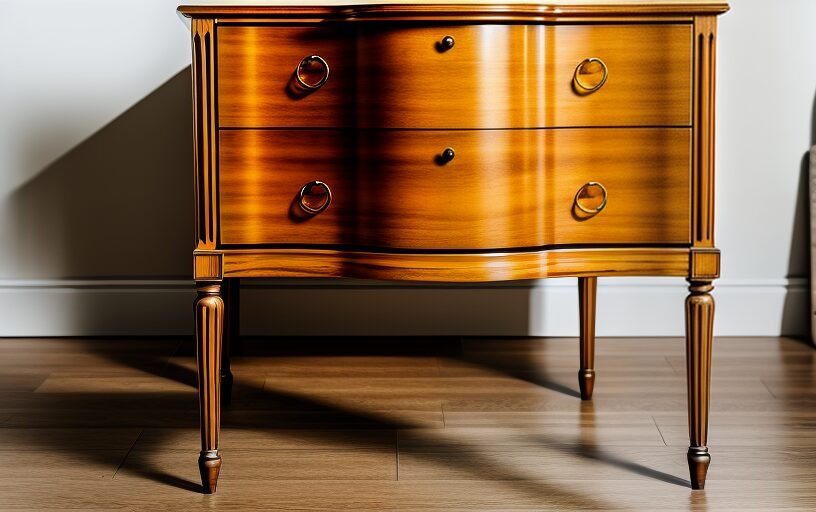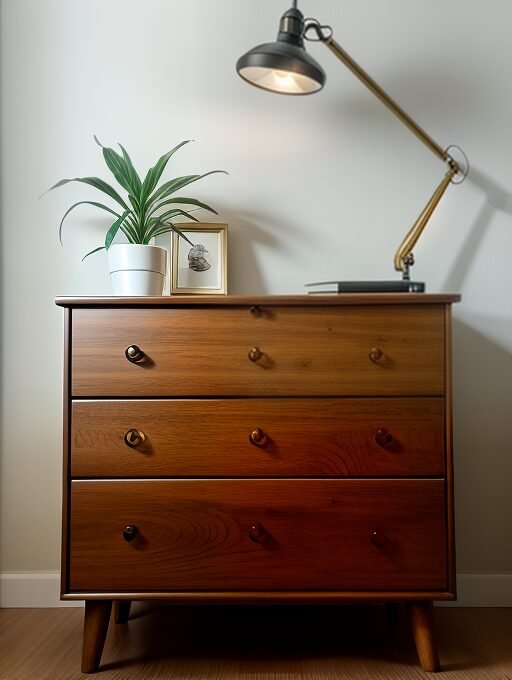How to Spot High-Quality Furniture That Lasts a Lifetime
A Comprehensive Guide
Furniture is an integral part of our homes and lives. From cosy sofas to sturdy dining tables, these pieces go beyond mere functionality; they embody your personal style and offer a glimpse into your personality. Investing in high-quality furniture not only enhances your living space but also proves to be a smart financial decision in the long run. However, with countless options on the market, how can you ensure you’re choosing pieces that will stand the test of time?
This comprehensive guide dives deeper into spotting high-quality furniture, equipping you with the knowledge to make informed decisions and invest wisely.
Understanding Quality in Furniture
Before beginning your search for the perfect furniture, it’s essential to understand the qualities that define high-quality pieces. Superior furniture is distinguished by three key aspects:
- Durability: High-quality furniture is built to last, crafted with robust materials and advanced construction techniques that ensure longevity. It’s an investment in pieces that can withstand the test of time and everyday use.
- Design: Timeless and versatile designs are hallmarks of premium furniture. These pieces transcend fleeting trends, maintaining their aesthetic appeal and functionality across different styles and periods. They effortlessly integrate into various interiors, offering lasting elegance.
- Craftsmanship: Exceptional craftsmanship is evident in the attention to detail, precise finishes, and refined touches that only skilled artisans can achieve. This reflects the care and expertise poured into creating each piece.
These three elements work together to ensure your furniture meets not only your immediate needs but also becomes a cherished part of your home for years to come. High-quality furniture is more than functional—it’s a statement of style, a reflection of personality, and a testament to enduring value. Choosing wisely enriches your living space and creates a lasting legacy of comfort and beauty.
Materials Matter: Choosing the Best
The materials used in furniture construction significantly influence its quality, longevity, and appearance. Let’s break down the best materials to consider for durable and beautiful furniture.
Solid Wood
Solid wood is a classic choice for high-quality furniture due to its durability, elegance, and timeless appeal. Hardwoods like oak, cherry, maple, and walnut are particularly prized for their strength and rich grain patterns. Here’s what to look for:
- Construction: Ensure the piece is made from solid wood rather than veneers or particle board.
- Finish: A well-applied finish enhances the wood’s natural beauty and protects it from wear and tear.
- Sustainability: Look for certifications like FSC (Forest Stewardship Council) to ensure the wood is sourced responsibly.
Metal
Furniture with metal components, particularly steel or wrought iron, is known for its strength and modern aesthetic. Metal can be used for structural support or as decorative accents. Consider:
- Powder Coating: A powder-coated finish resists rust and scratches, ensuring longevity.
- Joint Quality: Welded joints should be smooth and seamless, indicating skilled craftsmanship.
High-Quality Upholstery
For upholstered furniture, the quality of the fabric or leather plays a pivotal role in both comfort and durability. Key factors to evaluate include:
- Fabric Type: Natural fibres like cotton, wool, or linen are durable and breathable. Synthetic blends with stain-resistant properties are also worth considering for busy households.
- Thread Count: A higher thread count typically indicates a stronger and softer fabric.
- Cushioning: Opt for high-density foam or down-filled cushions that retain their shape over time.
Glass and Marble
Accent pieces like coffee tables or sideboards often feature glass or marble. While these materials are elegant, their durability depends on quality:
- Tempered Glass: Stronger and more shatter-resistant than regular glass.
- Marble Finish: Sealed surfaces prevent stains and wear, prolonging the piece’s life.
Craftsmanship: The Hallmark of Quality
Superior craftsmanship is the cornerstone of high-quality furniture. Paying attention to details can reveal whether a piece is worth your investment. Here’s what to examine:
Joints and Assembly
High-quality furniture is held together by durable joinery techniques such as:
- Mortise and Tenon Joints: Provide superior strength and stability without relying on nails or screws.
- Dovetail Joints: Often found in drawers, these joints interlock seamlessly, indicating meticulous craftsmanship.
Finish and Detailing
A well-executed finish not only enhances the piece’s aesthetic but also protects it from wear and tear. Look for:
- Smooth Surfaces: No rough edges, bubbling, or uneven application.
- Carvings or Stitching: Intricate details like uniform stitches or precise carvings reflect skilled artistry.
Hidden Areas
Inspect hidden areas such as the underside or back of the furniture. High-quality pieces will be finished uniformly, even in places that aren’t immediately visible.
Testing for Comfort and Strength
Furniture is meant to be both functional and comfortable. Always test pieces before committing to a purchase. Here’s how:
Comfort Test
- Sit or Recline: Ensure chairs, sofas, or beds provide adequate support and align with your comfort preferences.
- Cushion Resilience: Push down on cushions to check if they quickly regain their shape.
Stability Check
- Shake and Rock: Gently shake or press different parts of the furniture. High-quality pieces should feel sturdy and secure, with no wobbling or creaking.
- Weight: Heavier furniture often indicates solid construction and durable materials.

Timeless Design Over Trends
While it’s tempting to follow the latest interior design trends, opting for timeless designs ensures your furniture remains relevant for years. Consider:
- Neutral Colours: Shades like beige, grey, or white complement various decor styles and are less likely to feel dated.
- Classic Shapes: Look for simple, elegant lines rather than overly ornate or trendy designs.
- Versatility: Pieces that can adapt to different rooms or functions add long-term value.
Ask Questions: An Informed Purchase
Knowledge is power when it comes to making a major investment like furniture. Don’t hesitate to ask the seller questions, such as:
- Material Details: “Is this made from solid wood or veneer?”
- Manufacturing Process: “Where and how was this piece made?”
- Care Instructions: “How do I maintain this to ensure longevity?”
Reputable retailers will be transparent and happy to provide detailed information about their products.
Red Flags to Watch For
When shopping for furniture, be mindful of warning signs that indicate poor quality:
- Stapled Joints: Avoid pieces that rely on staples instead of proper joinery.
- Thin Veneers: Thin veneers over particleboard are prone to peeling and damage.
- Misaligned Components: Check for uneven surfaces, drawers that don’t align, or wobbly legs.
Sustainability: A Modern Priority
Investing in high-quality furniture isn’t just about durability—it’s also an environmentally responsible choice. Look for:
- Sustainable Materials: FSC-certified wood, recycled metals, or eco-friendly fabrics.
- Ethical Brands: Research manufacturers who prioritise fair labour practices and sustainable production methods.
By choosing sustainable furniture, you contribute to reducing waste and promoting ethical practices in the industry.
Conclusion
Selecting high-quality furniture is more than just a purchase; it’s an investment in your home and lifestyle. By focusing on materials, craftsmanship, timeless design, and comfort, you can identify pieces that will remain beautiful and functional for generations.
As you explore your options, remember that quality furniture offers not just utility but also a touch of elegance that enhances everyday living. So take your time, do your research, and invest wisely—your future self (and home) will thank you.
Some Questions Answered
FAQs: Your Guide to Choosing High-Quality Furniture
What defines high-quality furniture?
High-quality furniture is characterized by durability, timeless design, and exceptional craftsmanship. It’s made from robust materials using skilled techniques, ensuring longevity and aesthetic appeal. These pieces are not only functional but also add value and character to your space.
How can I tell if furniture is durable?
Durable furniture is made from high-quality materials like solid wood, metal, or premium upholstery. Look for sturdy joints, reinforced frames, and reliable construction methods such as dovetail or mortise-and-tenon joints. Avoid furniture with flimsy or poorly assembled parts.
Why is timeless design important in furniture?
Timeless designs transcend fleeting trends, maintaining their appeal and functionality over the years. Investing in such pieces ensures that your furniture remains stylish and versatile, fitting seamlessly into evolving interior styles without the need for frequent replacements.
How do I evaluate craftsmanship in furniture?
Examine the details closely. High-quality furniture will have smooth finishes, precise stitching, and attention to even hidden areas, like the underside or back. Drawers should slide smoothly, and upholstery should be taut and neatly aligned.
Is high-quality furniture worth the investment?
Absolutely. High-quality furniture is built to last, saving you money in the long run compared to replacing cheaper, low-quality pieces. Additionally, it enhances your home’s aesthetics, comfort, and overall value, making it a wise and fulfilling investment.
Would you like to submit a Blog Article?
More Posts

Harnessing the Wind: How Clean Energy is Powering a Sustainable Future
Imagine a world where our morning alarms, bustling city lights, and coSy electric fireplaces all function seamlessly with little to no impact on our planet. It sounds dreamy, right? Well, wind power is turning this dream into a reality. But how does electricity...
A Comprehensive Guide to Modern Trends Across Industries
In today’s rapidly evolving world, staying informed about trends and advancements in various sectors is crucial for businesses and individuals alike. This article explores the latest developments across multiple industries, shedding light on key innovations and...
How Tomato Paste is Made
How Tomato Paste Is Made Tomato paste is a versatile ingredient that has made its way into kitchens around the world. From enriching pasta sauces to serving as the base for soups, stews, and marinades, its concentrated flavour has transformed countless dishes. But...



